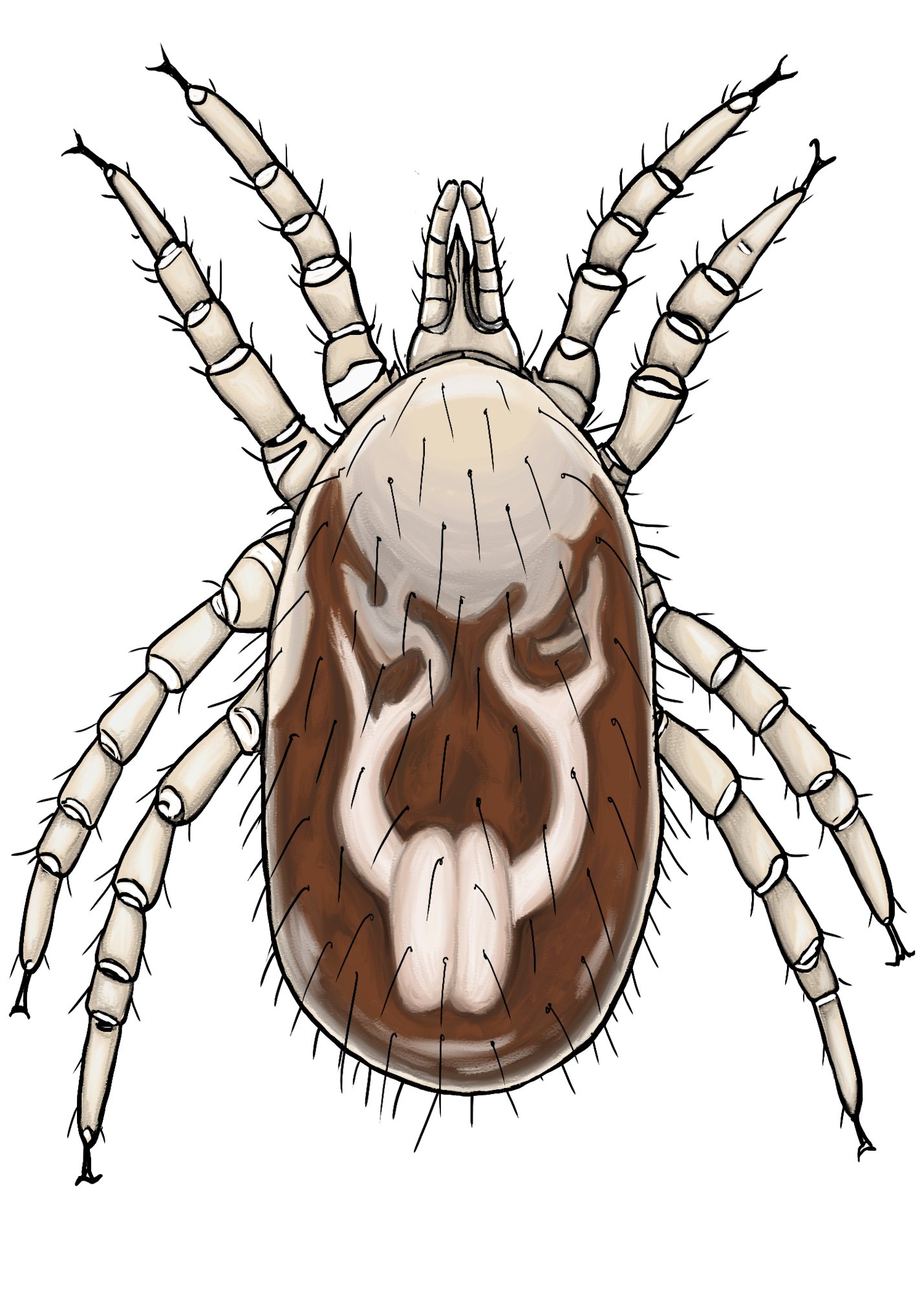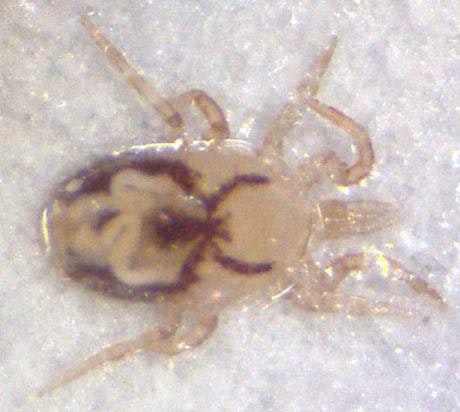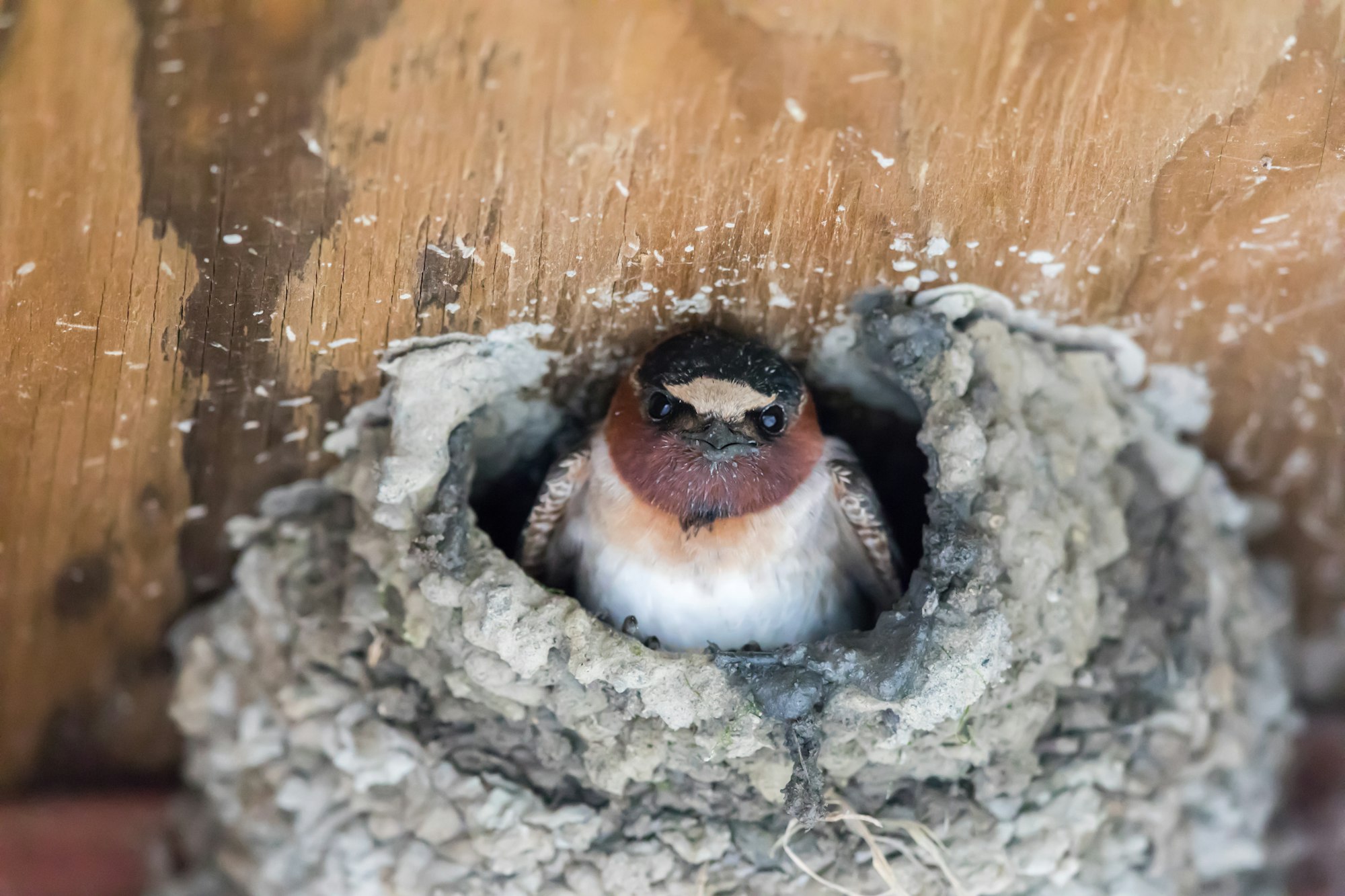Biting Mites

Mites are one of the most abundant groups on insects on the earth, yet are so small they are barely visible to the naked eye. The vast majority of mites are harmless - or even helpful - to humans. They live in plants, soil, water and sometimes in our homes.
We may go our entire lives without knowing mites are around us, but unfortunately, there are a few species that can cause problems. We call these “biting mites” as they are parasites that feed on skin cells or blood and can cause itchy marks.
Most biting mites are dependent on a specific host species (usually rats or birds) and cannot survive for very long without them even. Sometimes when their main host is not around, they will bite humans. When these rat or bird hosts infest our homes, mites may not be far behind.
If you believe you are being bitten by mites, the District offers rodent and bird inspections for your home and yard. Our laboratory can also identify mystery insects for you. Please contact us at 650-344-8592 or submit a service request online.
Most Common Biting Mites and Their Hosts
Biting Mites Found Indoors

Tropical Rat Mite (Ornithonyssus bacoti) - The tropical rat mite is the most common biting mite identified by our staff. These mites are associated with rats (Rattus spp.), and so the presence of these mites almost always indicates a rodent infestation in the building. Rat mites do not live on their hosts. They live in rat nests and in cracks and crevices near rat nests. When the rats abandon the nest, the mites will leave the nest to seek a new host. That is when they sometimes find people to bite. Rat mites cannot sustain themselves on human blood and will usually die 2-3 weeks after the rats have gone. Rat mites are most active at night.
Chicken Mite/Red Poultry Mite (Dermanyssus gallinae) - Chicken mites are parasites of chickens and other wild birds. They may infest attics, coops, and areas where birds have created nests. These mites do not live on their hosts, but live in nests, coops, and cracks and crevices near their host. Bloodfed mites and eggs may be picked up on clothing when handling infested chickens or spending time in infested coops, and brought indoors leading to an infestation in the home. Chicken mites cannot sustain themselves on human blood but can survive starvation for long periods of time (up to 34 weeks), during which time they may continue to bite their hosts at night. Home treatments may be required in order to suppress chicken mite infestations.
Northern Fowl Mite (Ornithonyssus sylviarum) - This mite lives on domestic and wild birds and is an important pest of poultry. Heavily infested birds will appear to have blackened feathers around the cloaca in the vent area. These mites live on their hosts and can bite day or night. They may bite humans when humans handle infested birds, or when wild birds that have been nesting in your home leave the nest or die, forcing the mites to seek a new host. Northern fowl mites can only survive off their main host for 2-3 weeks.
Biting Mites Found Outdoors
Chiggers/Trombiculid Mites (Eutrombicula spp.) - Trombiculid mites (also called harvest mites or chiggers) live outside in tall grass where they are parasites of lizards, small mammals, and birds. Only the larvae bite humans, causing itchy red bumps that appear in 3-6 hours. Chiggers do not burrow into the skin. Chiggers are not common in San Mateo County, but can be found in pockets where the climate is warm and there are large populations of lizards or wild rodents. If you believe you are being bitten by chiggers, wear loose-fitting long pants and long-sleeved shirts while outside and shower immediately using a gentle washcloth or loofah to remove any mites that may be clinging to your skin. Avoid sitting on the ground or leaning against areas with grass or plant matter, especially if there is evidence of wild rodents or lizards. Some EPA-registered repellents can also repel chiggers - check the label to see if chiggers are listed.
Straw Itch/Hay Itch Mites (Pyemotes tritici) - Straw itch mites are extremely small (0.2 mm long – invisible to the naked eye) parasites of beetles, moths, or other insects that infest straw, hay, and sometimes outdoor areas. They can easily pass between the threads of clothing, and thus people are often bitten anywhere that comes in contact with these materials such as the back, neck, abdomen, waist, or arms. It can take between 11 and 18 hours for the bites to develop in an itch or rash. If you think you may have straw itch mites in the environment, please contact the District so that we can identify them and help determine the extent of the affected area and provide tips to avoid bites.
Detecting Mite Infestations Indoors

Unlike fleas, which tend to bite on the ankles and lower legs, mites may bite anywhere on the body. They do not jump or fly, but they have powerful claws and are able to quickly grab and climb you if you brush into them. As they often become trapped under our clothing, people may be bitten the most often on the torso, or where clothing constricts the body such as the waistline, sock line, groin, and under the arms. Mites do not burrow into the body or stay on the body after feeding, and they usually retreat to dark spaces such as cracks, crevices, and into carpet or other fibrous materials. Not every family member in a household may be bitten or react to the bites.

Mites are attracted to carbon dioxide from your breath, heat, and body odor. They will tend to move toward the places you frequent the most such as your bed, desk, or favorite chair. When searching for mites, a flashlight held at an angle to the floor (a “raking” light) should be used to examine areas near heat sources such as hot water pipes, heating ducts, electrical fixtures, and around bedding. You should also check around vents, light fixtures, outlets or other openings to the wall void nearest to where the host activity is (closest to the rat or bird nest). You may also want to try using a sticky trap placed in these high interest areas to collect a sample. It is important to not clean around these traps, as you may remove the mites before they have a chance to get stuck.
Controlling Mites

You will not be able to eliminate mites from your environment without eliminating their host. Mites will starve to death on a diet of only human blood, but if rats or birds are present, they may persist indefinitely. Check your property carefully for a rodent infestation and resolve any issues you find. Eliminate any bird nests under eaves and in attics. If you have pet birds or chickens, treat them for mites. Be thorough! It will be impossible to eliminate mites if their animal host is still living in your home.

Once the host is eliminated, the mites will begin searching for a new host immediately. You may notice more bites once you have eliminated the animal that was causing the problem. It can take up to 6 weeks for mites to starve to death. If mite eggs are present, those 6 weeks begin from their hatching date, so you may experience “waves” of mites until the last of the eggs have gone. If this happens, you should contact a professional pest control operator to treat for mites.
Getting Help
San Mateo County Mosquito and Vector Control District provides identification of suspected mites and other insect/pest specimens. Please bring a sample to the District office for identification; we can also pickup an already-collected sample from your home address. Home inspections for bird or rodent infestation are also available. Schedule a service request by phone or online. All District services are provided at no additional fee to county residents.
Mystery Bug Bites and Your Health
Some people experience long periods of crawling and biting sensations in their skin and mites are very often blamed for these sensations. While this is often true, you should always confirm the presence of mites before you begin treatment for them. Biting mites are not truly invisible, and the majority of them can be seen by the naked eye, although they are very small. If you are unable to confirm the presence of mites, despite visits and consults with multiple entomologists, it could be very important to your health to consider other explanations.
Some common conditions that can cause sensations of crawling or biting include diabetes, autoimmune disorders, connective tissue disorders, medication incompatibility, poor reactions to substances, contact dermatitis, and trauma. If you work with wildlife or feral animals you may also potentially be exposed to other types of parasites. If multiple entomologists have failed to determine if mites are the source of your discomfort, you should consult a physician before pursuing additional pest control measures on your own.
Page last reviewed: February 14, 2025
